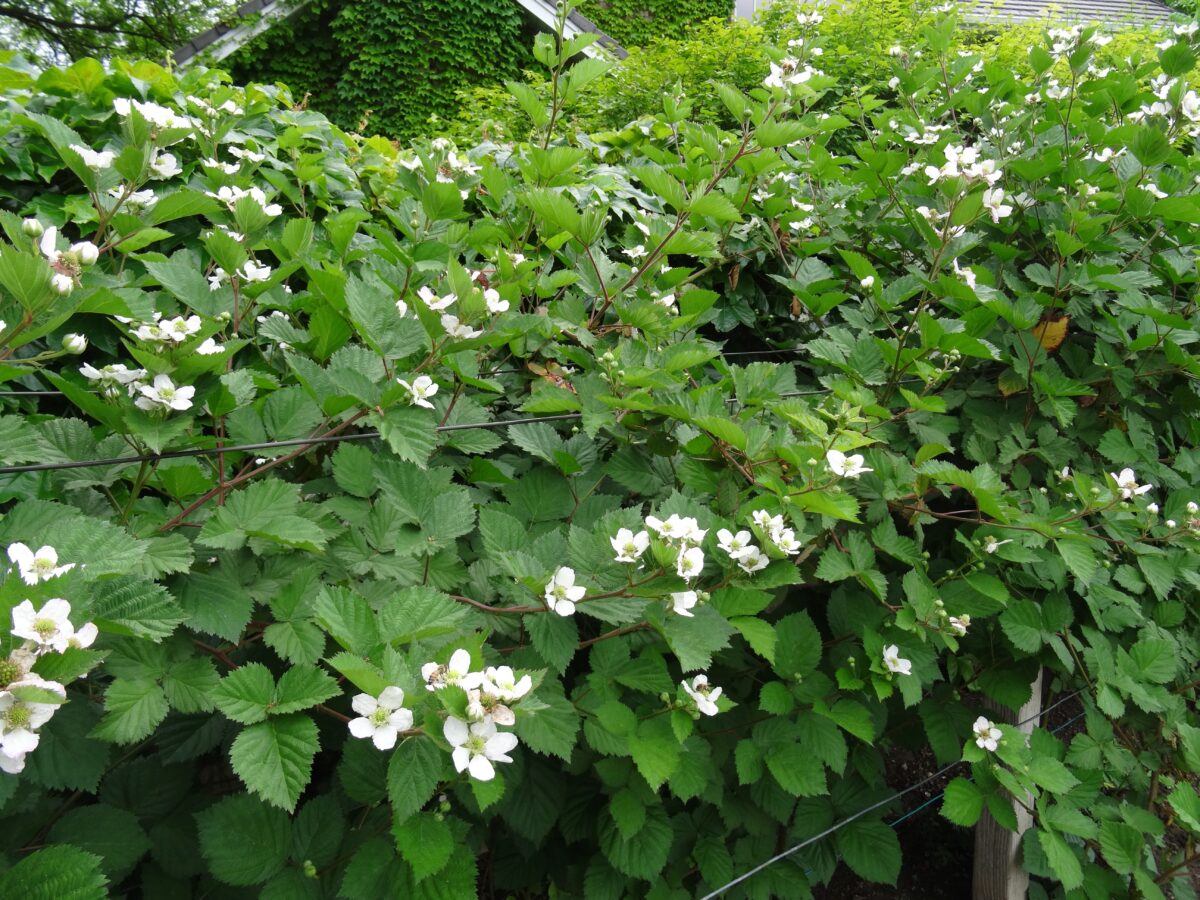Garden Help Desk: Growing better blackberries at home
- Blackberry flowers have a central structure that holds many individual ovaries. Each ovary must be pollinated so that it can develop into a plump little “ball” on a blackberry fruit. If flowers aren’t well-pollinated, or if insect activity damages the ovaries, the development of the fruit will be uneven.
- Well cared for blackberry plants will flower and bear fruit abundantly if there are healthy pollinators to carry pollen to the flowers.

Courtesy photo
Blackberry flowers have a central structure that holds many individual ovaries. Each ovary must be pollinated so that it can develop into a plump little "ball" on a blackberry fruit. If flowers aren't well-pollinated, or if insect activity damages the ovaries, the development of the fruit will be uneven.
Several years ago, we planted a blackberry bush. The plant is really just a bunch of single stalks that send out a prolific number of runners. We have thinned and thinned but the new runners just keep popping up each year. I am never quite sure which will produce more — the new stalks or the older ones. If I leave all the stalks my plant will be a mass of growth, so I just leave some of both. In the spring we get lots of flowers but most of them turn into mini blackberries and we only get a handful of full, large berries. The ground seems to stay moist from our sprinklers in the summer, but I’m wondering if we should do some flood irrigation this year, too.
Understanding a little bit about how caneberries (blackberries and raspberries) grow will help you make good pruning decisions.
Regardless of what variety you have, your blackberry plant has a perennial crown, the part below ground, and biennial canes that you see above ground. The crown lives for many years, but the canes only live for two years- most commonly growing as new green canes, called primocanes, one year and then flowering and producing fruit on those canes, called floricanes, the second year (there are a few blackberry varieties that will produce fruit on their primocanes). At the end of the second season, those fruiting canes die and should be pruned out, but the green canes that grow each year shouldn’t be pruned out- they are going to produce your fruit during their second year.
Blackberries also require an extra pruning step to encourage maximum berry production, so that may be a factor in the poor fruit production you’ve been seeing.
The late fall and winter months are a great time to go through your berry planting and remove all the canes that bore fruit during the season, but only those canes, not the ones that were new and green during the season. Those old canes are dead and won’t do anything but make your blackberry patch more crowded.

Courtesy photo
Well cared for blackberry plants will flower and bear fruit abundantly if there are healthy pollinators to carry pollen to the flowers.
You must keep the canes that were new last season; they are where you’ll get this season’s flowers and fruit. Only remove canes that are spindly, broken, or otherwise damaged.
Keep all the healthy new shoots that will grow this year; they’re going to provide next year’s flowers and fruit. Only remove new ones that are especially thin, or that are growing in your walkway. Then, if you still have lots of crowded new shoots this season you can selectively prune out some of them, keeping the best ones. Also, cut back the top few inches of the new canes once they reach your desire height, usually between 4-5 feet. This is called “tipping,” and it will encourage side branching on the canes to give you even more fruit next season.
If you’ll do the pruning I’ve described, the berry planting won’t be a mass of excess growth.
If you are seeing lots of flowers each year, but getting very little fruit, or getting mostly berries with only a few drupelets (the little “balls that make up the berry), you may be having pollination problems. Are you using insecticides routinely in your landscape? That could interfere with pollinator activity. Are you scouting for insect pests regularly? Insect feeding can damage young flowers and berries, preventing some of the drupelets from developing.
Your watering may also be part of the problem with the fruit quality. Caneberries should be watered deeply, but not more than about once a week during the summer (possibly once every 5-6 days during extreme heat) and less often in the spring and fall. The soil needs to dry a bit between the waterings to allow air to reach the roots. You’ll want to look at the way that area is watered to make sure the watering for the berry plants isn’t frequent. Supplementing with flood irrigation would do more harm than good if the area is staying consistently moist during the summer. I deep, but not frequent, soak with drip irrigation would be ideal.
Another thing to check is the amount of sun the plants are getting. They need at least six hours of high-quality sun during the day. Early morning and evening sun aren’t the best option.




